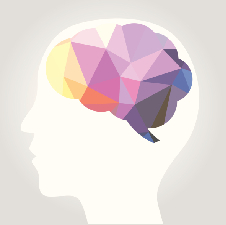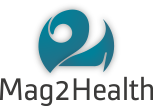article scientifique 1

Efficacité rTMS dépression
Bares M, Kopecek M, Novak T, Stopkova P, Sos P, Kozeny J, Brunovsky M, Höschl C. Low frequency (1-Hz), right prefrontal repetitive transcranial magnetic stimulation (rTMS) compared with venlafaxine ER in the treatment of resistant depression: a double-blind, single-centre, randomized study. J Affect Disord. 2009 Nov;118(1-3):94-100.
Abstract
BACKGROUND:
Previous studies have shown effectiveness of repetitive transcranial magnetic stimulation (rTMS) in the treatment of depression. This double-blind study compared efficacy of l Hz rTMS over the right prefrontal dorsolateral cortex with venlafaxine ER in the treatment of resistant depression.
METHODS:
A total of 60 inpatients with depressive disorder (DSM-IV criteria), who previously did not respond to at least one antidepressant treatment, were randomly assigned to 1 Hz rTMS with placebo and venlafaxine ER with sham rTMS for 4 weeks. The primary outcome measure was score change in the Montgomery-Asberg Depression Rating Scale (MADRS). We also used Clinical Global Impression (CGI) and Beck Depressive. Inventory-Short Form (BDI-SF). The response was defined as a >or=50% reduction of MADRS score.
RESULTS:
There were no significant differences between treatment groups in MADRS (p=0.38), BDI-SF (p=0.56) and CGI (p=0.17) scores from baseline to endpoint. Response rates for rTMS (33%) and venlafaxine (39%) as well as remission (MADRS score Small sample size. No placebo arm was included for ethical reasons, because both treatments have previously been reported to be more effective than placebo. Relatively short duration of antidepressant treatment. The findings of this study suggest that, at least in the acute treatment, the right sided rTMS produces clinically relevant reduction of depressive symptomatology in patients with resistant depression comparable to venlafaxine ER. Larger sample sizes are required to confirm these results. O’Reardon JP, Solvason HB, Janicak PG, Sampson S, Isenberg KE, Nahas Z, McDonald WM, Avery D, Fitzgerald PB, Loo C, Demitrack MA, George MS, Sackeim HA. Efficacy and safety of transcranial magnetic stimulation in the acute treatment of major depression: a multisite randomized controlled trial. Biol Psychiatry. 2007 Dec 1;62(11):1208-16. We tested whether transcranial magnetic stimulation (TMS) over the left dorsolateral prefrontal cortex (DLPFC) is effective and safe in the acute treatment of major depression. In a double-blind, multisite study, 301 medication-free patients with major depression who had not benefited from prior treatment were randomized to active (n = 155) or sham TMS (n = 146) conditions. Sessions were conducted five times per week with TMS at 10 pulses/sec, 120% of motor threshold, 3000 pulses/session, for 4-6 weeks. Primary outcome was the symptom score change as assessed at week 4 with the Montgomery-Asberg Depression Rating Scale (MADRS). Secondary outcomes included changes on the 17- and 24-item Hamilton Depression Rating Scale (HAMD) and response and remission rates with the MADRS and HAMD. Active TMS was significantly superior to sham TMS on the MADRS at week 4 (with a post hoc correction for inequality in symptom severity between groups at baseline), as well as on the HAMD17 and HAMD24 scales at weeks 4 and 6. Response rates were significantly higher with active TMS on all three scales at weeks 4 and 6. Remission rates were approximately twofold higher with active TMS at week 6 and significant on the MADRS and HAMD24 scales (but not the HAMD17 scale). Active TMS was well tolerated with a low dropout rate for adverse events (4.5%) that were generally mild and limited to transient scalp discomfort or pain. Transcranial magnetic stimulation was effective in treating major depression with minimal side effects reported. It offers clinicians a novel alternative for the treatment of this disorder. Revue de littérature en français Brunelin J, Poulet E, Boeuve C, Zeroug-vial H, d’Amato T, Saoud M. [Efficacy of repetitive transcranial magnetic stimulation (rTMS) in major depression: a review]. Encephale. 2007 Mar-Apr;33(2):126-34. In 1985, Barker et al. showed that it was possible to stimulate both nerves and brain using external magnetic stimulation without significant pain. During the past 10 years, therapeutic effects of repeated Transcranial Magnetic Stimulation (rTMS) have been widely studied in psychiatry and its efficacy has been demonstrated in the treatment of major depressive disorders, particularly as an alternative to electroconvulsivotherapy (ECT). Facing the large range of studies, we found necessary to propose an up-to-date review in French of the methodological and therapeutic variations among them. Based on an exhaustive consultation of Medline data and the Avery-George-Holtzheimer Database of rTMS Depression-Studies, supplemented by a manual research, only works evaluating the therapeutic efficacy of rTMS on depressive symptoms were retained, excluding all studies exclusively investigating the stimulation parameters or the tolerance as well as case reports. Out the 66 available reports we retained 30 studies. After a description of the main results of these 30 studies, several elements of the 66 will be discussed. Open studies demonstrated that short courses rTMS (5 to 10 sessions) produced a decrease in the mean Hamilton Depression Ratting Scale (HDRS) scores, although significant remission of depression in individuals was rare. Most authors had used high frequency rTMS applied to the left Dorso Lateral Prefrontal Cortex (left DLPFC). However, low frequency rTMS applied to the right DLPFC was also followed by significant reduction of HDRS scores. Parallel arm, double blind versus placebo studies are designed to clarify the therapeutic efficacy of rTMS therapy but conclude in contradicting results. Literature data globally confirms a greater efficacy of rTMS compared to placebo (37% responders in the active group vs 20% in the sham). This efficacy could in fact be even greater because the sham procedure is disputable in most studies. Indeed, positioning rTMS coil at 45 or 90 from the scalp may not represent an accurate sham procedure and the use of real sham coil is to be recommended. Only one study has suggested that associating rTMS and ECT could decrease the number of general anesthesia required. Therapeutic efficacy has been shown by either inhibiting the right DLPFC or by stimulating the left DLPFC, although some patients exhibit paradoxical responses. High frequency rTMS (>5 Hz) increases cortical excitability and metabolism, while low-frequency rTMS stimulation ( 1 Hz) has the opposite effect. Other parameters are: relevant: intensity (from 80 to 110% of motor threshold), total number of stimulations (from 120 to 2 000) and total number of rTMS sessions (from 5 to 20). As suggested in most recent studies, higher-intensity pulses, higher number of stimulation or longer treatment courses may be more effective. Greater responsiveness to rTMS may be predicted by several patients’ factors, including the absence of psychosis, younger age and previous response to rTMS therapy. Conclusions on these factors and others, such as the importance of anatomically accurate coil placement and the distance from the coil to the brain, await further investigation. Despite heterogeneity of these reports according to methodology and treatment parameters, the antidepressive properties of rTMS now appear obvious, opening interesting prospects, in particular in the treatment of pharmacoresistant major depressive patients and, we hope, administered as adjuvant therapy in non-resistant depression. Thus, many questions remain unanswered concerning the optimal stimulation parameters, privileged indications and maintenance sessions. This justifies the development of structured evaluation trials on larger samples.LIMITATIONS:
CONCLUSION:
Abstract
BACKGROUND:
METHODS:
RESULTS:
CONCLUSIONS:
Abstract
INTRODUCTION:
METHOD:
RESULTS:
DISCUSSION:
CONCLUSION:
